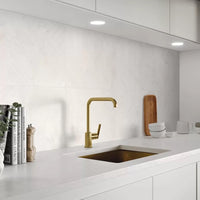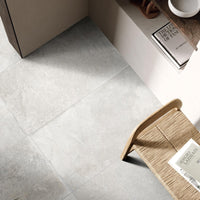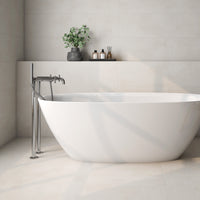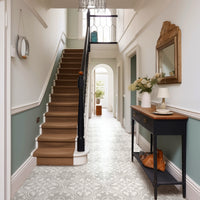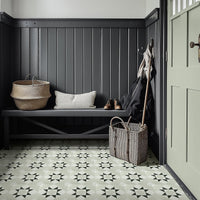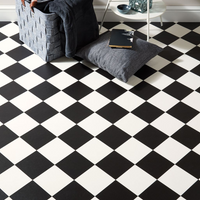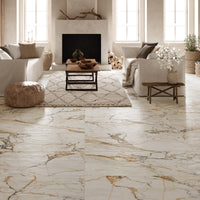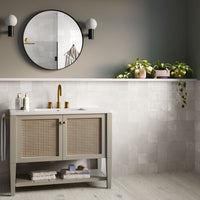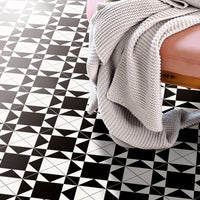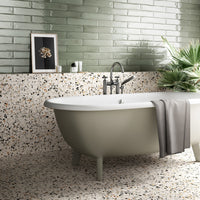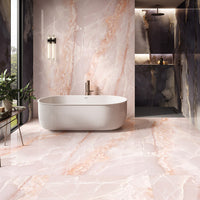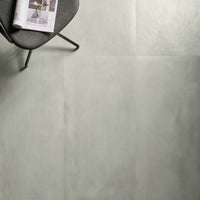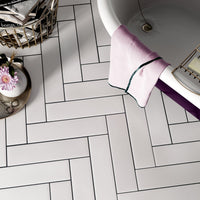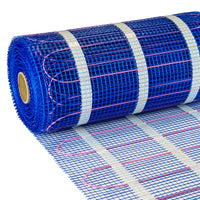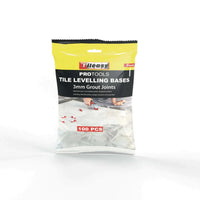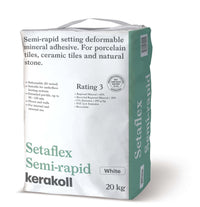Bathroom wall and floor finishes are among the first things that people choose when they begin decorating this important room in the house. This choice has undergone many changes over time, in terms of both the aesthetic of the surfaces, and the methods of installation.

.jpg)
In the UK, our choice of bathroom have historically been somewhat at odds with trends in continental Europe, where tiled floors and walls are almost universal.
Over the past decade, however, the difference in bathroom design between the UK and elsewhere in Europe has narrowed. And, simultaneously, across the Continent, there have been subtle changes in the use of tiles as a bathroom surface.
Half Height Walls
In the past, the height at which the tiles were laid varied from 1.2 to 1.5 metres, from the ground to half-way up the wall, leaving the upper portion of the wall white and exposed; a practice that is still quite common in certain areas of Italy and other countries, where other materials besides ceramic tile are used on the walls.

The Modern Alternative
Today an alternative to this solution sees tiles being laid up to the height of the door, between 2 to 2.2 metres, allowing more freedom in the tile’s aesthetics, and making it possible to incorporate various changes in colour, pattern, and surface finish to obtain dynamic walls. The uncovered portion of the wall is thus restricted to the perimeter just below the ceiling: an area that can simply be repainted from time to time.


Floor to Ceiling Tiling
In recent years, more and more homeowners have taken a leaf out of the hotelier’s design book and selected floor-to-ceiling tiling as a more contemporary and practical solution. This takes tiling up to a height of around 2.7 metres, unless the ceiling has been deliberately lowered to create a more intimate space.


The visual impression of floor-to-ceiling tiling is pleasing and elegant: the vertical portions are compact, linear, and with the advent of large format tiles up to 1,000 by 3,000mm, the subtlety of the grout lines creates a virtually seamless aesthetic.
With these floor-to-ceiling tiling schemes, the need to periodically repaint is eliminated (apart from the ceiling) and the walls are completely protected from dirt, mould, and humidity. This innovation has also inspired the creation of antibacterial slabs, like Panaria’s ceramic surfaces with Protect technology, which eliminates up to 99.9% of bacteria.
The aesthetic of the surfaces, on the other hand, has branched out into two kinds of colour choices: on the one hand the preference for neutral tones that help to turn the bathroom into an intimate and relaxing environment, and on the other hand decorative solutions that bring character and personality to the space.


Today, therefore, full-height wall tiling, in the name of functionality and aesthetic sophistication, is the latest trend in bathroom aesthetics. With tiles now available in a vast various of styles, colours, and surfaces, there is now a design to satisfy every home owner’s bathroom dream.
All image credits - Panaria Ceramica
